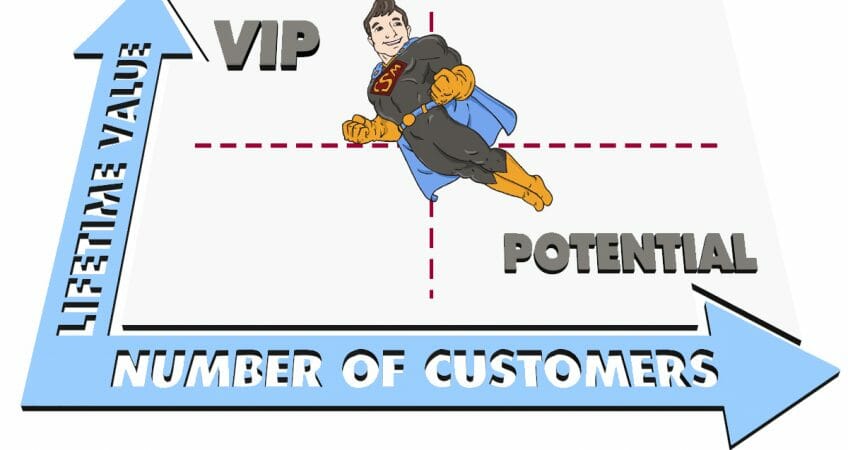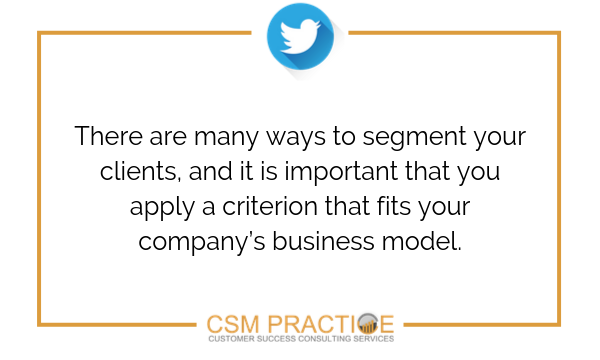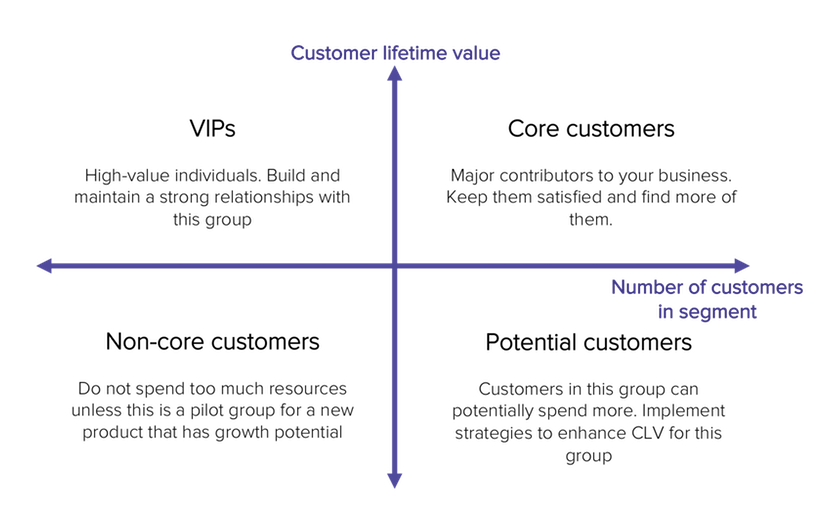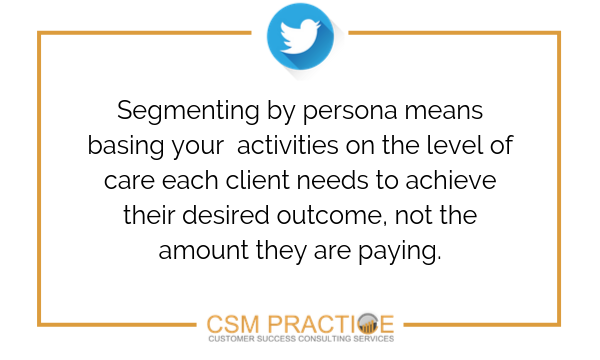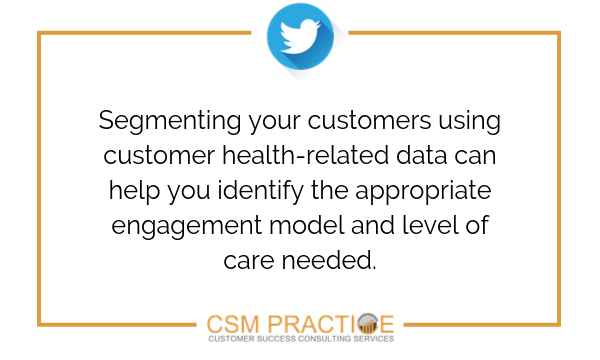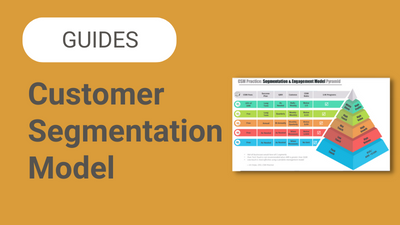As your company grows and you win more customers, you will either need to hire more people or be smarter with your time. To scale your Customer Success team, you will need to segment your customers and apply the appropriate engagement model. This means defining the appropriate amount of time and resources to mitigate the related level of risk each customer segment entails.
In my line of work, I help clients identify the Customer Success activities and programs relevant to each customer segment. The result of this work is immediate. The Customer Success team becomes more prescriptive, more confident, and more proactive. Moreover, the perceived notion that the “reactive” question will be solved only by hiring additional Customer Success Managers is often demystified as soon as the proper segmentation is applied. Lastly, your team will finally have the time to focus on high-value activities and become a trusted adviser to your customers.
There are many ways to segment your clients, and it is important that you apply a criterion that fits your company’s business model. Segmenting your clients will provide you with a concrete picture of their needs and how to fulfill them. Once you have finished with segmentation, it will be easier to find an engagement model that fits each segment group. In this blog, I am going to share three ways to achieve proper segmentation, which will help you move towards efficiently scaling your customer success team.
Value Segmentation
Value-based segmentation is probably one of the most popular segmentation methods out there. It means grouping your customers based on their total contract value, or Annual Recurring Revenue (ARR). One rule is to assign one Customer Success Manager per every 2 MM in ARR. There are several benefits to this method and the way it relates to Customer Success, but some suggest that this method does not reflect the real needs of the customers.
Persona Segmentation
Another way to think about customer segmentation is by looking at the appropriate experience that customers have with your company. The appropriate customer experiences refer to the type of customer journey the client should take to achieve their goals. This approach entails basing your planned activities, programs, and playbooks on the level of care each client truly needs to achieve their desired outcome during the customer journey, instead of the amount they are paying for.
Profitability Segmentation
Regardless of the method you choose, it is important to validate your segmentation process with a well-developed scientific research process. After all, scaling your Customer Success is a critical step in growing your business, and should not be left to chance.
Segmenting your customers using customer health-related data can help you identify the appropriate engagement model and level of care required. I help my clients to visualize the state of their customer base, using a quadrant similar to the one depicted below. The quadrant helps to develop appropriate playbooks and success plans that define a proactive and appropriate action plan for each segment.
Source: Alacer Group
Summary
At some point, you must segment your client base if you want to scale your customer success effort. Segmentation based on criteria that fit your business model will make it easier for you to know your customers’ needs and therefore find the right engagement model for each segment.
In order to segment your customers, you can either apply a value-based persona or big data segmentation. Value-based entails assigning one Customer Success Manager per every 2 MM in ARR. Persona segmentation entails planning your activities based on the level of care the customer needs to achieve their desired outcome during the customer journey, instead of the amount they are paying for. Lastly, you can segment your clients based on their health-related data.
-
Customer segmentation helps you apply the appropriate engagement model and become more proactive.
-
Value-based segmentation is about assigning one Customer Success Manager per every 2 MM in ARR.
-
You can also look at the appropriate experience of the client and base your activities on the desired outcome.
-
Customer-related health data can help you to develop appropriate playbooks and success plans that define a proactive and appropriate action plan for each segment.
What factors do you use to segment your clients? How has that helped your Customer Success team scale? Please share your experiences with other Customer Success professionals in the comments below.
This article originally appeared on The Amity Blog and has been republished with permission.

